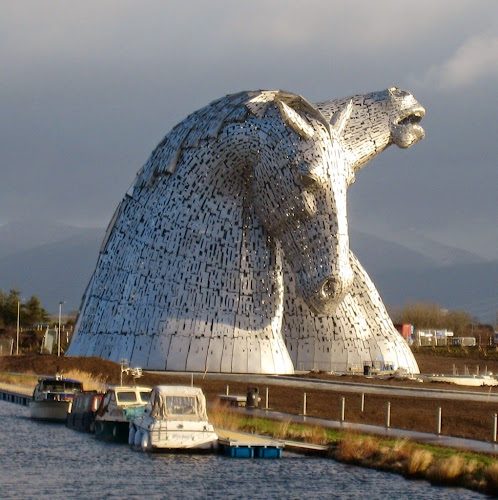From its capital to its smallest pueblo, every place will have its plaza. Some will be permanently part built, an assortment of decaying,rotting concrete structures, dry fountains and an aire of decrepitude. Others will be under a programme of renovation, whilst the best will be a sanctum of peace and shade. But common to most will be a collection of statuary. By way of historical reasoning, the centrepiece will be one of the liberators, generally the boss: San Martin.
A town's size can be easily gauged by the gran delinquency of it's statuary. If the place is small then a bust will have to suffice; increase the population and he gets a sword to point theatrically, add a few more people and he gets to ride a horse. And therein lies the problem of Newtonian gravity. How do you balance all that bronze on two prancing equine feet? Nature manages it for just a few short momments, but posterity requires a longer term solution. A swishing tail, or a protruding cannon can offer a third point of contact, the latter having an element of dubiousness. As these structures are always high above the average citizen's eye line, stuck as they are up on their plinth, they're viewed as dark creatures against a bright sky. Ponderous, imposing, old fashioned. However, there is one adornment that they lack when compared with a similar Scottish monument. The draped judiciary wig of pigeon poop. Odd, as there are pigeons, but evidence would suggest that they seem more keen to roost on the back of the seat I'm sitting on.
In a land of superlatives, where each centre of population strives to outclaim their neighbour, be it the capital of this, the biggest of that, or the oldest of another, it's amusing to realise that Scotland can rightly claim to have the world's largest equestrian monument. The Kelpies.
At some point in history these monumental edifices will have had a purpose, one that was more evident then than it is today. Then there's those constructions on British hilltops, or a town's high street, with their plaques that suggest that they were financed by a grateful tenantry. Yet, in the light of today, you can't help constructing a sub text that lies between these lines. Where 'grateful' equates to 'coerced', and 'tenantry' to 'penury'. But if you take the reasoning behind the Scottish Water Horses, the celebration of past industries, the promise of a region's regeneration, and equate it to a South American history, of escape from the tyranny of Spanish imperialism. For example, to take just one illustration. During the 18th Century, the Spanish crown wouldn't sanction any printing presses, allowing just three book titles, all of a religious nature, and a fourth; the bible for the sole use by the barley literate clergy. Now I can possibly start to understand the purpose of these iconographic personifications. That, and we can play the game of guessing "who's stuck up their pole today", as we roll into our next town.
Yet not all plazas are militaristic in decoration, occasionally a construct will catch my attention. A concrete death mask of the Nobel poet laureate, Gabriela Mistral, in Vicuna. The bronzed vintage Ford with flat capped driver in The English Quarter of Coquimbo. A differing take on equestrianism in the Jujuy's Cathedral precincts, or, what defies explanation, but looks like the recycled parts from another project, found in Vina del Mar.



